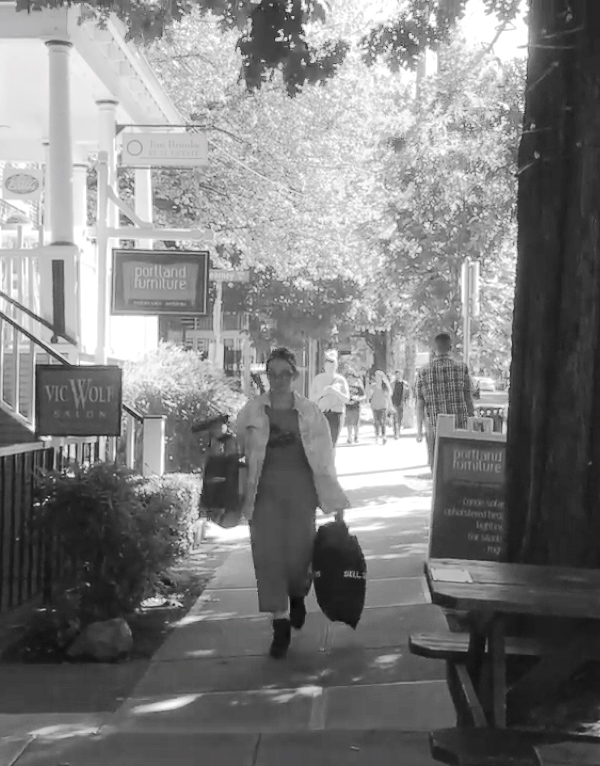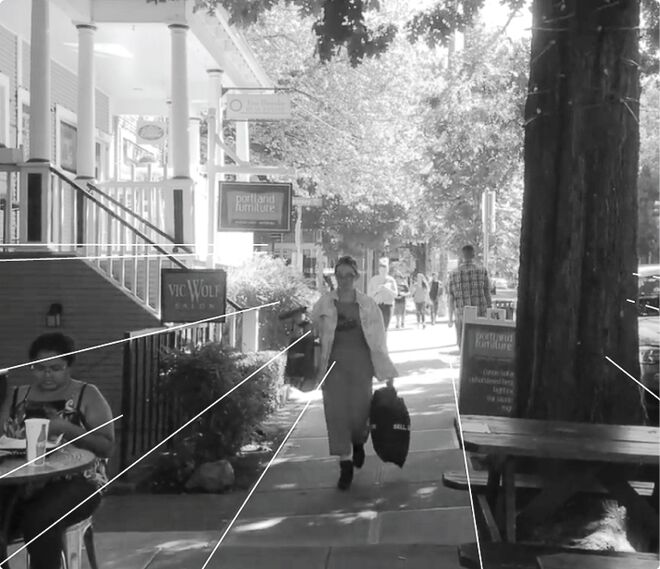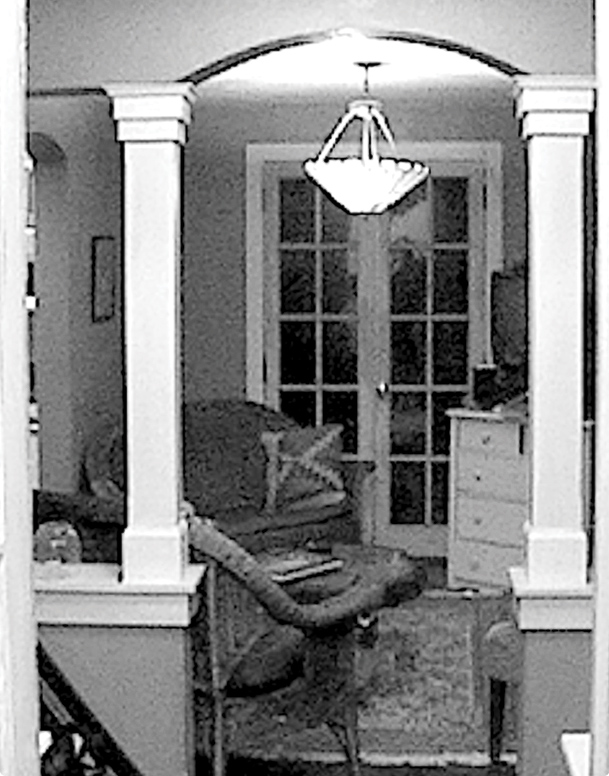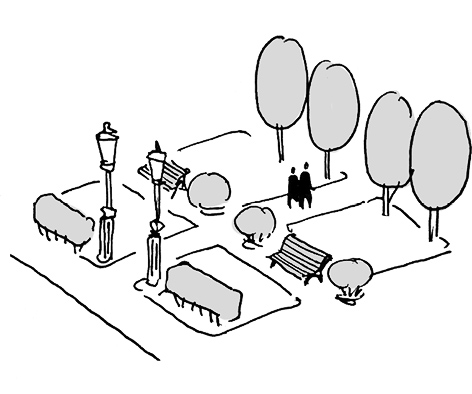10.3. Layered Zones
Aus Pattern Language Wiki
Along Walkable Streetscape, and within Circulation Network, there is a need to articulate the layers of space, especially layers of public to private.
Problem-statement: People have a basic psychological need to experience layers of space. This need is especially acute at the edges of buildings.
Discussion:The experience of layers is one of the most fundamental of human experiences, with its roots deep in our evolutionary history. It seems closely related to the need to experience enclosure, and to define and control our layers of privacy. It is also closely related to our preference to seek out the most protective parts of a space, which often occur at the edges of different layers — a phenomenon known as thigmotaxis.¹ Layers of space can also exist as articulations of room-like zones, as described in Place Network. We can see quite complex examples of these layers in some of the best and most active streetscapes, as well as in other exterior and interior spaces.
In his four-volume book The Nature of Order: An Essay on the Art of Building and the Nature of the Universe, Christopher Alexander considered some of the broader geometrical forces that shape human as well as natural environments. He noted that all complex systems have very similar structural rules. Working systems are typically layered, having multiple levels of scale and interconnected component subsystems. Their morphology frequently reveals marvelous solutions to connecting distinct subsystems through a semi-permeable membrane. Human spaces, it turns out, are really no different.
Typically, the layered zones of a space help to define a complex, tissue-like transition between the most public spaces (e.g the street) and the most private ones (e.g. the most private rooms). They help us to become comfortable in choosing our degree of exposure or protection, and in carrying out other activities in the most appropriate and comfortable situation. But layered zones can also exist in entirely public spaces, like a park, and entirely private ones, like an interior space articulated into layered zones with columns.
Therefore:
Create layered zones of space, especially where articulations of gradations of privacy are required, or where definition of spaces is needed (such as at the edges of parks and other public spaces). Articulate these zones with columns, railings, fencing, vegetation, elevation changes, and other clear demarcations. But keep a connection as well as a separation of the layers.
Fill the layered zones with Human-Scale Detail and Construction Ornament. …
¹ As discussed previously in Arcade Building, our colleagues Ann Sussman and Justin Hollander describe this phenomenon and provide additional research citations in Sussman, A. & Hollander, J.B. (2015) Cognitive Architecture. New York: Routledge.
Mehaffy, M. et al. (2020). LAYERED ZONES (pattern). In A New Pattern Language for Growing Regions. The Dalles: Sustasis Press. Available at https://pattern-language.wiki/.../Layered_Zones
SECTION I:
PATTERNS OF SCALE
1. REGIONAL PATTERNS
Define the large-scale spatial organization…
1.4. 400M THROUGH STREET NETWORK
2. URBAN PATTERNS
Establish essential urban characteristics…
3. STREET PATTERNS
Identify and allocate street types…
4. NEIGHBORHOOD PATTERNS
Define neighborhood-scale elements…
5. SPECIAL USE PATTERNS
Integrate unique urban elements with care…
6. PUBLIC SPACE PATTERNS
Establish the character of the crucial public realm…
7. BLOCK AND PLOT PATTERNS
Lay out the detailed structure of property lines…
8. STREETSCAPE PATTERNS
Configure the street as a welcoming place…
9. BUILDING PATTERNS
Lay out appropriate urban buildings…
10. BUILDING EDGE PATTERNS
Create interior and exterior connectivity…
10.1. INDOOR-OUTDOOR AMBIGUITY
SECTION II:
PATTERNS OF MULTIPLE SCALE
11. GEOMETRIC PATTERNS
Build in coherent geometries at all scales…
11.2. SMALL GROUPS OF ELEMENTS
12. AFFORDANCE PATTERNS
Build in user capacity to shape the environment…
13. RETROFIT PATTERNS
Revitalize and improve existing urban assets …
14. INFORMAL GROWTH PATTERNS
Accommodate “bottom-up” urban growth…
15. CONSTRUCTION PATTERNS
Use the building process to enrich the result…
SECTION III:
PATTERNS OF PROCESS
16. IMPLEMENTATION TOOL PATTERNS
Use tools to achieve successful results…
16.2. ENTITLEMENT STREAMLINING
16.3. NEIGHBORHOOD PLANNING CENTER
17. PROJECT ECONOMICS PATTERNS
Create flows of money that support urban quality…
17.4. ECONOMIES OF PLACE AND DIFFERENTIATION
18. PLACE GOVERNANCE PATTERNS
Processes for making and managing places…
18.3. PUBLIC-PRIVATE PLACE MANAGEMENT
19. AFFORDABILITY PATTERNS
Build in affordability for all incomes…
19.1. INTEGRATED AFFORDABILITY
20. NEW TECHNOLOGY PATTERNS
Integrate new systems without damaging old ones…
20.2. RESPONSIVE TRANSPORTATION NETWORK COMPANY



